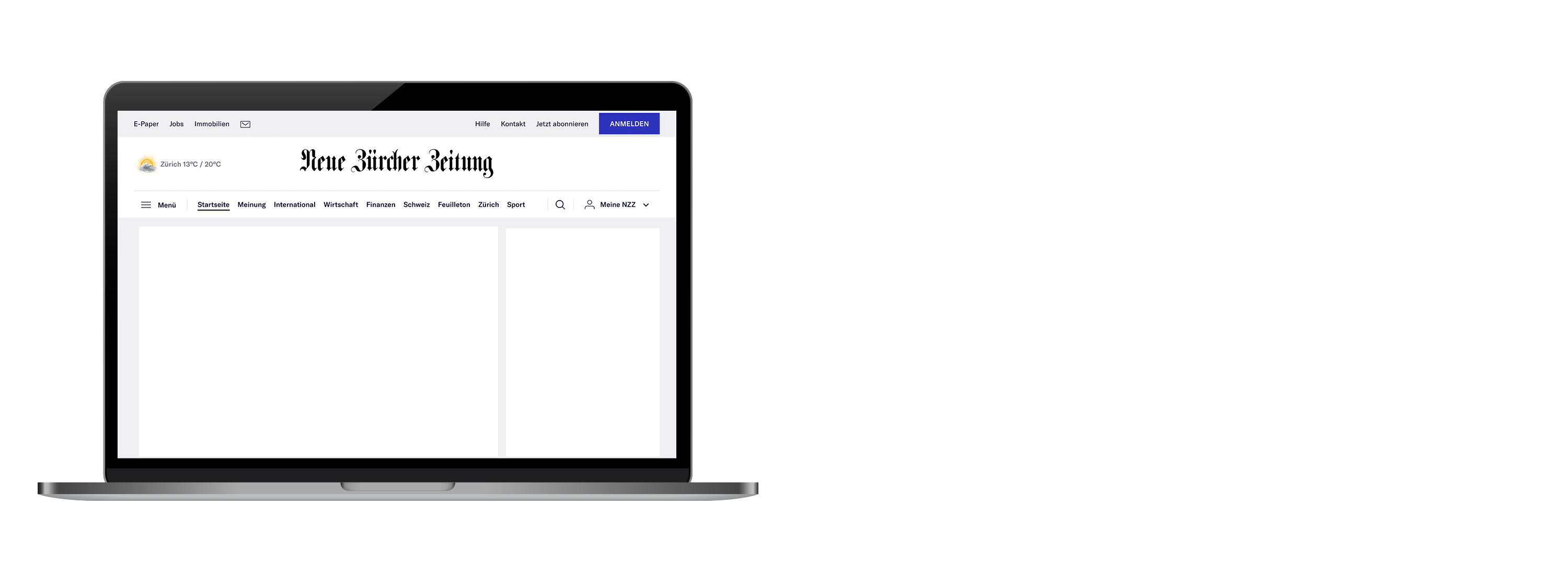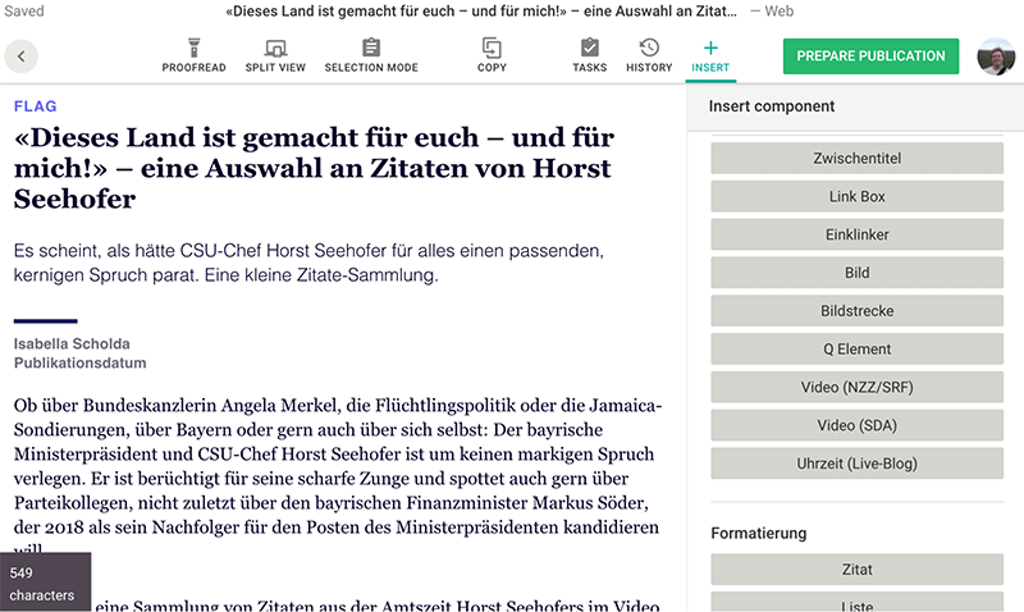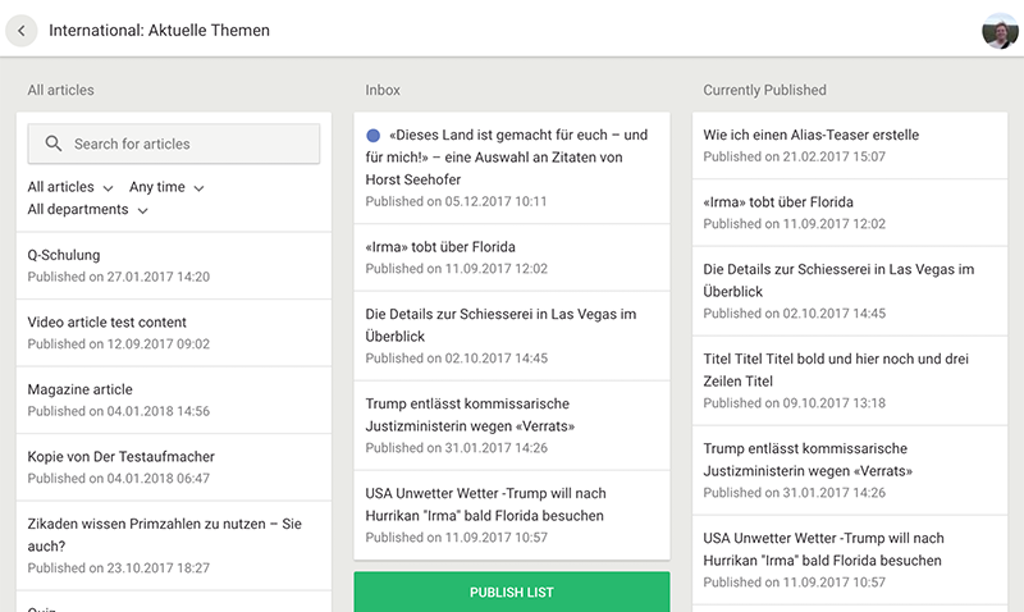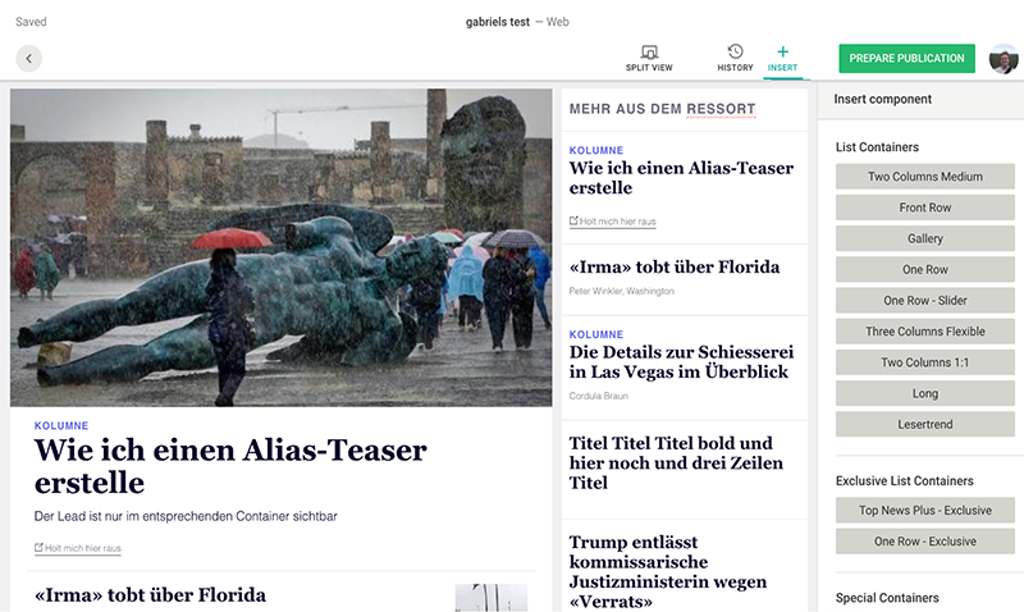Neue Zürcher Zeitung
Re-thinking newspaper workflows
The Neue Zürcher Zeitung, short NZZ, is the oldest of the major newspaper brands in Switzerland and has a rich history of quality journalism across borders. Like many bigger media companies, they applied a plethora of different tools and workflows across their titles. Their main CMS was Atex Polopoly. Due to the changing landscape of content consumption, they were faced with new challenges that couldn’t be solved in the old system.
Goals
-
Unite print and online
-
Quickly start new online
products -
Improve efficiency in workflows
Results
-
Write for print and online in
Livingdocs -
Launch new products in under 3 months
-
Specialised teams for different
tasks
Workflows
NZZ did think big. The project was not just about upgrading from a legacy system, but about building the infrastructure for a digital future of the whole newspaper. There was one core challenge: One newsroom should write for both online and print edition. Using one tool: Livingdocs.
It was clear that for this to work, Livingdocs, a browser-based web editor, would need to support a lot of print specifics. Moreover, we needed to define a new workflow that could bring together two mostly separated worlds: writing for print and writing for the web.
The NZZ became an innovative lab environment where together we could find a novel way to work the newspaper business. A unified approach now brings print and online together, allows easy and quick setups of new content products and supports the regional outlets. Content comes alive in this environment, and it becomes the foundation on which a subscription-based business model can be built and maintained.
Livingdocs is the foundation of NZZ’s digital infrastructure, finally enabling us to harmonize the CMS across all the products we offer.

Andreas Bossecker,
CTIO NZZ Mediengruppe
The key to the solution was the component-based nature of Livingdocs. In Livingdocs, an article is not a template, but a flexible arrangement of about 20 smaller templates, the components. Going from an online article to a print article is just a translation of one component set into another. The same is true across products, e.g. going from the daily edition to the sunday edition or the lifestyle magazine.
Today, there are about 500 components at NZZ spread over 24 different sets in 6 different content products. The design team updates those sets in a two-weekly rhythm and improvements are continually integrated. Gone are the days of the big re-design. The journalists work comfortably in their web-browser and can flexibly write for the whole range of products, creating the best possible reading experience for different audiences. Even the proofreaders profit from the use of components through a system that highlights only the components that changed since the last spellchecking review.






Livingdocs components can be easily converted between products and channels. NZZ uses them to share content between print, web, their magazine (Bellevue), their sunday edition (NZZ am Sonntag), their newsletters and for around 20 different channels such as Facebook Instant articles.
System landscape
The systems landscape was drastically simplified. There is one single entry point for production: Livingdocs. Articles written for print in Livingdocs are sent to WoodWing Enterprise for post-processing in InDesign. InCopy licenses are not needed anymore. Even the newsletters are written in Livingdocs and sent to Adobe marketing cloud only for delivery.
The editorial planning happens in Desk-Net. Data journalism doesn’t need a separate team anymore, but its application has been simplified so far that it is integrated into the newsroom and any editor can use components to visualize analyses. For this, NZZ built the Q Tool that is seamlessly integrated into Livingdocs.
The frontend applications are developed by NZZ. They built a web framework (Morpheus) which works with Livingdocs as a backend and a flexible native app builder called VAMP, based on react native. The paywall is CeleraOne and payments are handled in SAP. In addition to their own delivery channels, Livingdocs supports a wealth of other channels such as Facebook Instant articles or Google AMP.
Livingdocs is NZZ's production tool. Every day 500+ journalists log into the editor to write articles and/or curate overview pages. The print workflow is enabled by huGO+ and WoodWing for post-production. Analytics is done in chartbeat and planning in Desk-Net.
Separation of concerns
The new workflows at NZZ allow every journalist to write for print and online. While the flexibility to work across channels has become greater, NZZ wanted to restrict concerns about the layout in the production logic.
Livingdocs allows for graphical layout of teasers on the start and overview pages. NZZ wanted a more streamlined process, however, in which only very few users control the layout. Most of the site responsibles now work on a simple priority list view that we implemented in Livingdocs. They see which new articles have come in for a topic and sort them with drag and drop. Not all journalists are concerned anymore with how a certain teaser image looks at a particular location, only a very small team implements the graphical post-processing for the start page. This improves performance and overall efficiency.
A similar picture presents itself with print. Livingdocs allows for a lot of the day-to-day needs of print journalists, such as print-specific characters, seeing the correct line-breaks and checking over- and underflow. A team of 6 is responsible for the microtypographical postprocessing on the InDesign page, while the rest of the newsroom can work on their stories.
To streamline these processes, NZZ used the authorisation system of Livingdocs. Journalists only see the option to write and publish articles. Site responsibles also have access to the list tool in order to sort articles for topics, and only a small handful of users has access to the graphical page management. In addition, they used configurable workflow tasks to ensure that all articles are proofread and reviewed.

Write

Prioritize

Layout
Journalists write and publish articles. Site managers prioritize the different articles in a list. Layouters curate the display of the lists on the overview pages.
A new form of publishing
At the core of NZZ’s strategy are questions that concern every traditional newspaper: How can we produce more efficiently, drive revenue on content and still maintain a high quality product? The investment in new workflows at NZZ has paid off: The last 2 years have seen profits again and the shareholder dividend is back where it was. It was great to see how open the team at NZZ was to embrace new technologies, and how they challenged us to develop a toolkit that really works.
Our journey with NZZ continues. In late 2016, they became the first outside investor into Livingdocs with a stake of 15% and they will remain at the forefront of our innovation cycle, continually updating, trying out new features in their newsrooms and challenging our ideas against the reality of the newspaper business.